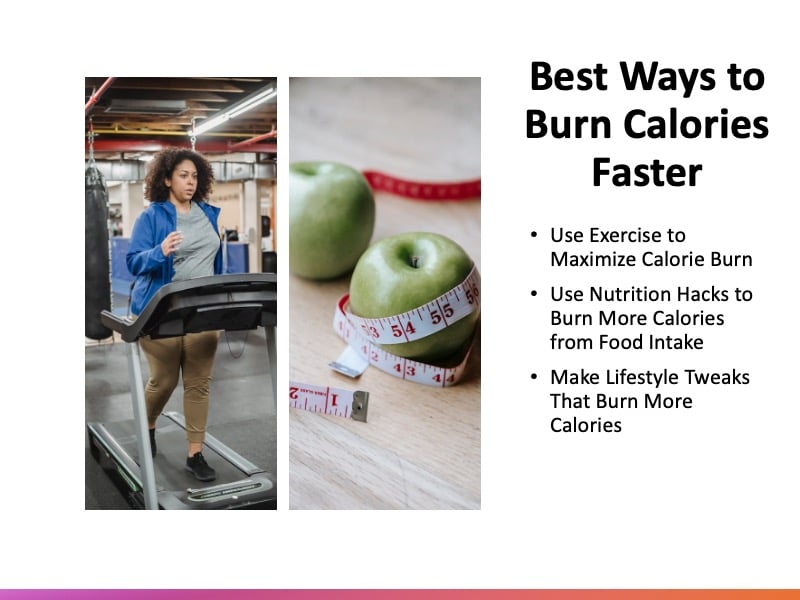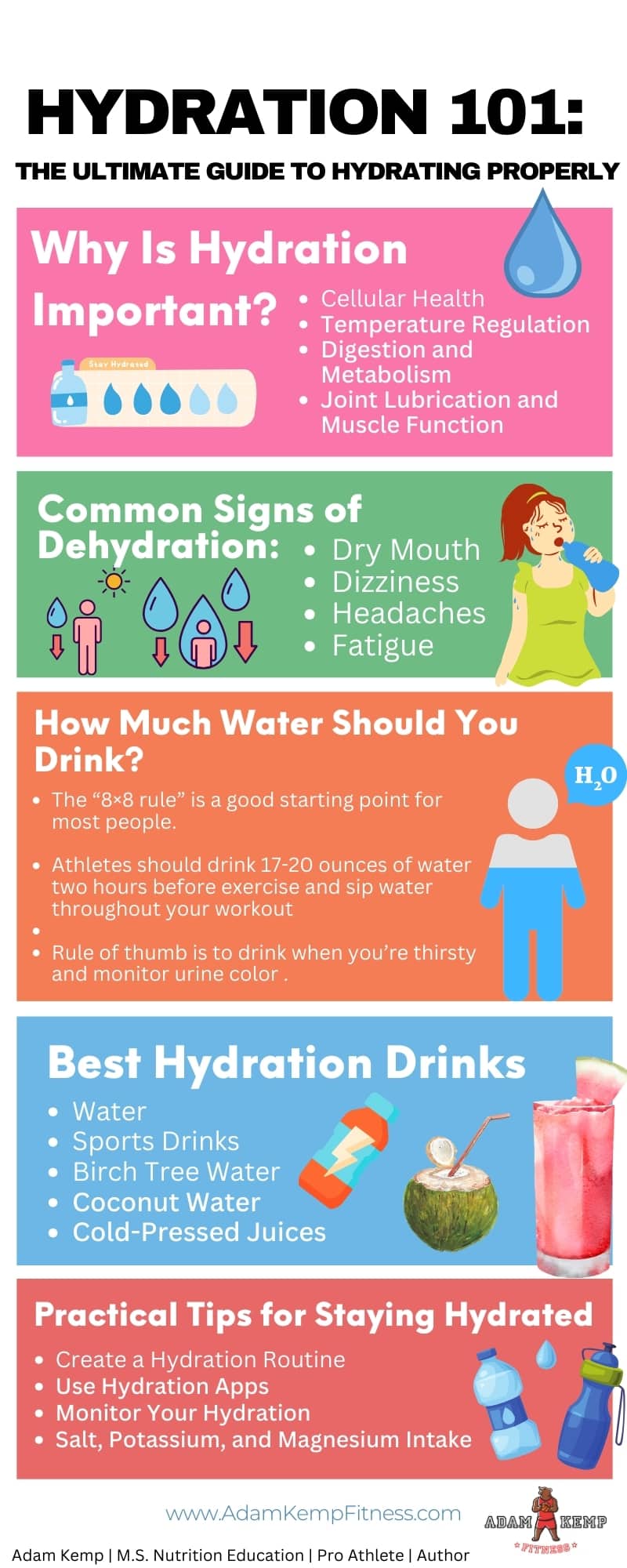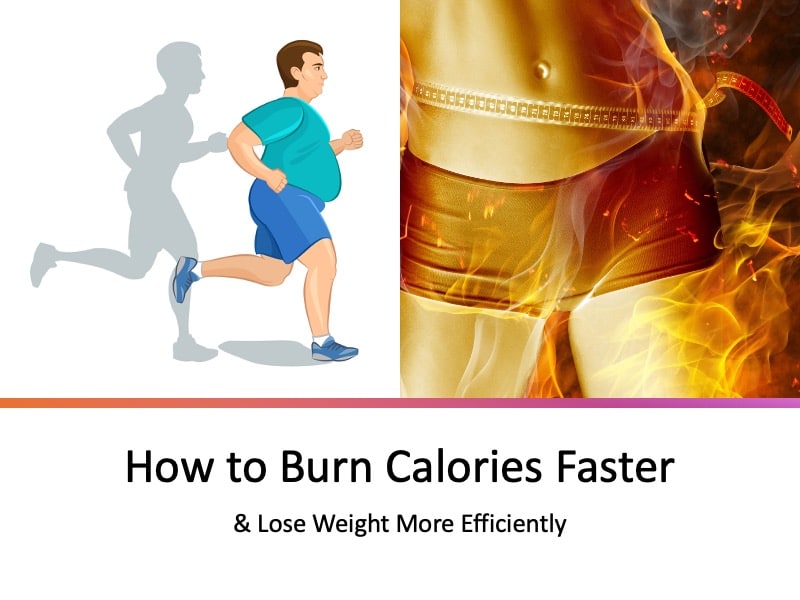How to Burn Calories Faster & Lose Weight More Efficiently
Burning calories efficiently is at the heart of sustainable weight loss and improved metabolic health.
Although your basal metabolic rate (BMR) accounts for up to 75% of the total calories you burn daily, it’s possible to influence this through specific lifestyle changes, nutritional strategies, and exercise techniques (Manore, 2015).
As a professional athlete with over a decade of experience fine-tuning my metabolism for peak performance, I’ve learned exactly how to burn calories faster using safe, science-backed methods.
Whether you’re an active lifestyle advocate or just starting your health journey, understanding how to burn calories faster is essential for increasing daily energy expenditure and achieving long-term fat loss.
This guide breaks down the science behind calorie expenditure, clarifies what truly influences metabolism, and provides actionable strategies for accelerating fat loss without relying on crash diets or unsustainable shortcuts.
What are Calories?
Calories are units of energy that measure the amount of energy in the food we eat.
The human body needs energy to function, and this energy is derived from the food we eat.
The amount of energy in food is measured in calories.
The more calories a food has, the more energy it provides to the body.
The body requires a certain amount of calories to carry out its daily activities, known as the basal metabolic rate (BMR).
BMR is the amount of energy required by the body to maintain basic functions such as breathing, circulation, and cell production while at rest.
In other words, it is the energy needed to keep the body functioning at a basic level.
When we eat more calories than our body needs, the excess calories are stored in the body as fat.
Over time, this can lead to weight gain.
On the other hand, if we consume fewer calories than our body needs, the body will begin to burn fat for energy, which can result in weight loss.
However, it is very important to note that not all calories are created equal.
The source of calories matters as some foods provide more nutrients than others.
For example, 100 calories of broccoli provide more nutritional value than 100 calories of candy.
For weight management and overall health purposes, consuming a balanced diet that provides the necessary nutrients while staying within the daily calorie requirement is essential.
How Does the Body Burn Calories?
The body burns calories as a part of its natural process of converting food into energy.
This process is known as metabolism.
Metabolism is a complex biochemical process that takes place in every cell of our body, including organs like the liver, brain, and muscles.
As mentioned before, the energy produced during metabolism powers all bodily functions, including breathing, blood circulation, digestion, and physical activity.
The body burns calories in two ways: through the basal metabolic rate (BMR) and through physical activity. BMR refers to the energy that the body requires to maintain basic functions such as breathing, blood circulation, and organ function.
This energy requirement varies from person to person based on factors such as age, gender, weight, and body composition.
However, it is estimated that BMR accounts for approximately 60-75% of the total calories burned by the body each day.
Physical activity refers to any activity that involves movement, such as exercise, walking, and daily activities like housework and yard work.
Physical activity burns calories by increasing the body’s energy expenditure above its resting metabolic rate.
This additional energy requirement is met by burning calories from food or stored fat.
It is important to note that the rate at which the body burns calories can vary significantly from person to person.
Factors such as genetics, age, gender, and body composition can all impact an individual’s BMR and physical activity levels.
However, some strategies can help the body burn calories faster, including increasing physical activity, building muscle through resistance training, and consuming foods that boost metabolism.
How Many Calories Should You Burn a Day?
The number of calories an individual should burn daily varies depending on several factors, such as age, sex, weight, height, and activity level.
The average number of calories a person needs to maintain their weight is called the basal metabolic rate (BMR).
This is the amount of energy your body needs to perform basic functions such as breathing, circulating blood, and keeping your organs functioning while at rest.
To calculate your BMR, you can use various online calculators that consider your age, sex, height, and weight.
For example, a sedentary woman aged 30, who is 5 feet 4 inches tall and weighs 150 pounds, would have a BMR of approximately 1,400 calories per day.
This means she would burn approximately 1,400 calories if she rested all day.
However, to determine the number of calories you should burn daily to maintain your weight, you also need to factor in your activity level.
A sedentary lifestyle would require the same calories as your BMR, whereas a moderate or active lifestyle would require additional calories.
According to the American Council on Exercise (ACE), the average number of calories burned per day for a sedentary person is around 1,800 to 2,000 for women and 2,400 to 2,600 for men.
A moderately active person may require approximately 2,000 to 2,200 calories per day for women and 2,400 to 2,800 per day for men.
For those who are very active or perform intense exercise, the calorie requirements may be as high as 2,400 to 2,800 calories per day for women and 3,000 to 3,500 calories per day for men.
It’s important to note that these are just estimates, and individual calorie needs may vary depending on several factors, such as genetics, age, and health conditions.
Additionally, a calorie deficit is required for weight loss, meaning you need to burn more calories than you consume.
However, creating too much of a calorie deficit can be harmful.
I suggest a daily calorie deficit of 500-1000 calories daily, which will help you lose 2 pounds per week maximum, and should not promote negative health outcomes.
Underconsuming calories significantly may cause your body to go into starvation mode, creating metabolic adaptations to weight loss, leading to a slower metabolism and difficulty losing weight.
Consulting a healthcare professional or registered dietitian can help determine the appropriate calorie intake for your needs.
Common Mistakes That Slow Your Metabolism
Even with the best intentions, certain habits can reduce how many calories you burn per day. Here are a few to watch for:
- Over-restricting calories: A severe calorie deficit can lead to metabolic adaptation and muscle loss.
- Skipping resistance training: Cardio burns calories, but strength training builds muscle that burns calories 24/7.
- Poor sleep: Inadequate rest increases cravings, lowers energy, and decreases fat oxidation.
- High stress and cortisol: Chronic stress hormones blunt fat-burning and promote fat storage.
- Too little protein: Inhibits lean mass retention and lowers the thermic effect of food.
Fixing these can jumpstart a slow metabolism and support sustainable fat loss.
Best Ways to Burn Calories Faster

Burning more calories doesn’t always mean spending more hours in the gym. You can dramatically increase your total daily energy expenditure (TDEE) through smart movement strategies, dietary upgrades, and subtle lifestyle changes that compound over time.
As a professional athlete with a degree in Nutrition Education, I’ve tested countless strategies to improve fat loss efficiency and metabolic health—and I believe these are the best ways to burn calories faster.
Use Exercise to Maximize Calorie Burn
Certain forms of training drastically increase the number of calories burned during and after your workout.
Some even elevate your resting energy expenditure for hours—sometimes days—after finishing.
Strength Training to Build Muscle
Muscle tissue is metabolically active and burns more calories at rest than fat tissue, making strength training one of the best ways to burn calories faster.
Prioritizing compound lifts such as squats, lunges, kettlebell swings, and deadlifts will help you gain lean mass and elevate your resting metabolic rate over time.
Adding just a few pounds of lean muscle can lead to a meaningful increase in calories burned throughout the day—even while you’re doing nothing.
High-Intensity Interval Training (HIIT)
High-intensity interval training—short bursts of intense work followed by brief rest—stimulates excess post-exercise oxygen consumption (EPOC), increasing energy expenditure for up to 24 hours after the workout.
Sprints, jump rope intervals, or fast-paced bodyweight circuits are efficient options for burning calories in less time.
Out of all the interval training styles I’ve tried, Tabata workouts remain my favorite because they deliver maximum intensity in minimal time.
The structure is simple: push yourself for 20 seconds, rest for 10, and repeat that cycle eight times for a total of four minutes that challenge both your body and mind.
Sprinting for Maximum Output
Sprint workouts fast-twitch muscle fibers, which demand more energy.
Short sprint sessions not only burn calories at the moment but also enhance post-exercise fat oxidation and calorie burn for hours after.
Try 4–6 rounds of 30-second hill sprints with 90 seconds rest for an elite-level metabolic push.
Wear a Sauna Suit During Workouts
Wearing a sauna suit while exercising elevates core temperature, increases sweat output, and can boost energy expenditure during exercise by up to 13%.
Though most weight loss from sauna suits is water weight, they can aid temporary calorie burn and reduce bloating—just be cautious about staying hydrated and avoiding overheating.
Do More Daily Movement with NEAT
Non-Exercise Activity Thermogenesis (NEAT) (NEAT) includes everything from walking to fidgeting—and it can burn hundreds more calories per day without structured workouts.
Standing, walking, stretching, and even fidgeting help combat the metabolic slowdown from long periods of sitting. Use a standing desk, take the stairs, or schedule 5-minute walks every hour.
Research shows that people with high NEAT can burn up to 2,000 more calories per day than those who are sedentary.
Movement stacking is a simple way to increase NEAT without structured workouts. The goal is to layer light activity into routine tasks:
- Walk during phone calls
- Do calf raises or squats while brushing your teeth
- Use a standing desk or alternate between sitting and standing every 30 minutes
- Stretch or pace while watching TV or reading
- Park farther away or take the stairs instead of the elevator
These micro-efforts compound over time and can lead to hundreds of extra calories burned daily.
Use Nutrition Hacks to Burn More Calories from Food Intake
Your body uses energy to digest, absorb, and metabolize food.
Strategic food choices can enhance this thermic effect and lead to more calories burned through digestion.
Prioritize Protein and Fiber-Rich Foods
While it’s often overlooked, the thermic effect of food (TEF) plays a crucial role in total daily energy expenditure (TDEE).
TEF refers to the calories your body burns during the digestion, absorption, and metabolism of food. On average, TEF accounts for about 10% of your TDEE.
However, not all macronutrients are created equal in this regard:
- Protein: Burns 20–30% of its calories during digestion
- Carbohydrates: Burns 5–10%
- Fats: Burns only 0–3%
Eating protein-rich meals, especially in combination with high-fiber foods, increases the thermogenic response, which helps you burn more calories passively throughout the day.
Lean meats, eggs, legumes, and protein powders are excellent choices.
Pair protein with fiber-rich foods like lentils, oats, berries, and cruciferous vegetables to promote fullness and increase the energy required for digestion.
Add Metabolism-Boosting Spices
Capsaicin, the compound that gives chili peppers their heat, can slightly raise body temperature and calorie burn.
Add cayenne pepper or hot sauce to your meals for a small but meaningful effect.
Incorporate Coconut Oil in Moderation
Coconut oil contains medium-chain triglycerides (MCTs), which are rapidly used for energy and can modestly increase daily calorie burn compared to other fats.
Research demonstrates that replacing some long-chain fats with MCTs can increase daily energy expenditure and support fat oxidation.
Stay Hydrated All Day
Mild dehydration slows metabolism and reduces fat oxidation.
Consistent fluid intake supports all hydration, cellular functions involved in energy production, and calorie burning.
Drinking 500 ml (17 oz) of water before meals can boost metabolism and reduce calorie intake.
Water also plays a key role in the body’s thermogenic response and fat-burning processes.

Consume Clean Caffeine Sources
Caffeine increases thermogenesis and fat mobilization, especially before exercise.
Black coffee, green tea, and performance drinks like Celsius energy drinks offer clean energy without added sugars or artificial junk.
Green tea’s active compound, EGCG, enhances fat oxidation and raises 24-hour energy expenditure.
Its combination with caffeine provides a synergistic effect for burning more calories.
Make Lifestyle Tweaks That Burn More Calories
Sustainable fat loss isn’t just built in the gym — it’s shaped by the small choices you make throughout the day.
Improve Sleep Quality
Poor sleep reduces fat oxidation, increases hunger hormones, and lowers resting metabolic rate.
Aim for 7–9 hours of consistent, high-quality sleep to keep metabolism running optimally.
Even one night of poor sleep can reduce your resting energy expenditure and increase cravings for sugar and processed foods.
To improve your sleep and support metabolic health, focus on the following habits:
- Follow a consistent sleep schedule
- Avoid caffeine and alcohol in the evening
- Create a relaxing wind-down routine
- Optimize your sleep environment
- When needed, use natural sleep aid such as magnesium glycinate, tart cherry juice, or calming herbal teas like chamomile and lavender.
For extra sleep support, supplements like Rootcha Zinc & Magnesium and Qunol Magnesium Glycinate can help you sleep better.
Last update on 2025-04-15 / This article includes affiliate links/Images via Amazon Product Advertising API. I may earn commissions on purchases made through these links.
Manage Stress to Control Cortisol
Chronically elevated cortisol slows metabolism and increases fat storage.
Practices like prayer, meditation, deep breathing, and daily outdoor time help lower stress and support better calorie utilization.
Try Cold Exposure
Cold exposure activates brown adipose tissue (BAT), which burns calories to generate heat.
Contrast showers, ice bathing, or short cold air exposure may help increase energy expenditure over time.
A Sample Day: How to Burn More Calories Without Overhauling Your Life
You don’t need a complete lifestyle overhaul to boost your daily calorie burn.
Small, intentional choices—when stacked together—can make a big difference in energy expenditure and metabolic health.
This sample day integrates NEAT, smart training, and food-driven thermogenesis in a realistic, sustainable way.
Morning
- 10-minute brisk walk to jumpstart circulation and metabolic activity
- Black coffee or green tea for a natural caffeine boost that enhances fat oxidation
- High-protein breakfast: 3 scrambled eggs with spinach, ½ avocado, and oatmeal topped with berries — a combination that stabilizes blood sugar and activates the thermic effect of food.
Midday
- Standing desk or movement breaks every hour to reduce sedentary time and increase NEAT
- 15-minute bodyweight Tabata workout (e.g., squats, push-ups, mountain climbers) to stimulate EPOC and build strength
- Hydrate with 500 ml (17 oz) of water before lunch to support digestion and slightly elevate resting metabolic rate
Evening
- 10-minute walk after dinner to aid digestion and support glucose regulation
- Wind-down routine with herbal tea (chamomile or lemon balm) to lower cortisol and promote restful sleep
- Consistent sleep schedule: In bed by 10:30 PM to optimize hormonal balance and fat-burning efficiency overnight
Estimated Additional Calorie Burn:
~300–500+ calories, depending on movement intensity, body weight, and muscle mass
Final Thoughts: How to Burn More Calories Per Day
Burning more calories daily isn’t just about pushing harder in your workouts — it’s about moving more, fueling smarter, and living intentionally.
High-intensity training methods like Tabata provide powerful bursts of calorie burn, but long-term success comes from combining that intensity with daily habits that support an active lifestyle.
Small changes for losing weight, like increasing your step count, improving sleep quality, managing stress, and making better nutrition choices, can significantly impact your overall energy expenditure.
When you stack these habits consistently, you create a metabolism that works with you — not against you.
The goal isn’t to burn out — it’s to build a lifestyle that keeps your body active, resilient, and primed for progress every single day.




